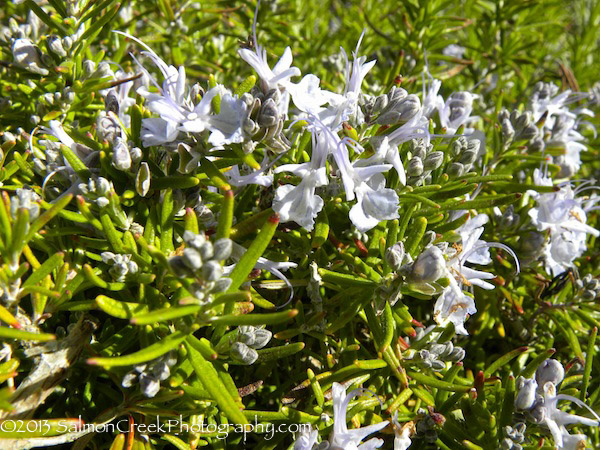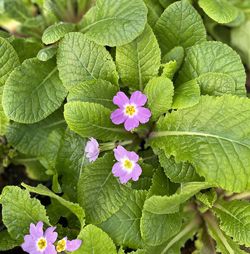
Rosmarinus
Rosemary
Studious Greeks twined Rosemary in their hair “for remembrance” before exams; the French burned it as an incense substitute in cathedrals. And of course, there’s the taste—pungent and aromatic, a pinch delivers a punch of flavor. The rugged evergreens of this genus afford short needle-like foliage studded with tiny, orchid-shaped mostly blue blooms. Rosemary obliges heat and poor soil, triumphs over deer and diseases, only improves with age and doesn’t demand much, except for sharp draining soil.
Rosmarinus officinalis ‘Taylor’s Blue’ (S-0701)
OUT OF PRODUCTION AT THIS TIME
Email me when this plant is available

If you are short on space, consider this compact well-groomed Rosemary introduced by the late Ken Taylor. A no-fuss ‘Collingwood Ingram’ sport, the close-set, shiny deep green leaves on trailing and upward arching stems are loaded with bright lavender-blue blooms. ‘Taylor’s Blue’ can be tucked into a dry area where its dark, fine textured needles offset Cistus ‘Tania Compton’s rippled gray-green foliage.
Blooms January – April.
Size: 2' 0" high x 3' 0" wide.
Zone 7/8.
Please fill out our Registration Form to receive news of updates to the web site, availability of new plants, give us your feedback, and to be on the mailing list to receive future printed catalogs.
Other selections in this genus:
- Rosmarinus officinalis ‘Arp’
- Rosmarinus officinalis ‘Blue Spires’
- Rosmarinus officinalis ‘Herb Cottage’
- Rosmarinus officinalis ‘Irene’
- Rosmarinus officinalis ‘Lady In White’
- Rosmarinus officinalis ‘Madeline Hill’
- Rosmarinus officinalis ‘Majorca Pink’
- Rosmarinus officinalis ‘Maltese White’
- Rosmarinus officinalis ‘Santa Barbara Blue’
- Rosmarinus officinalis ‘Sawyer’s Blue’










